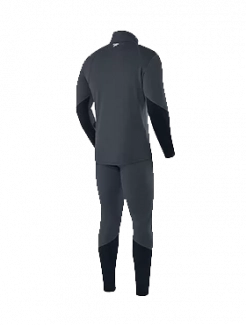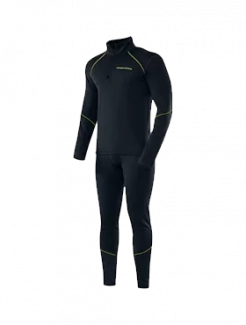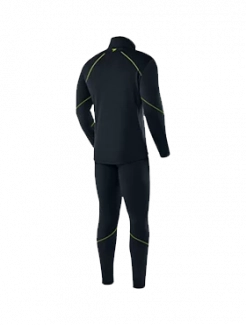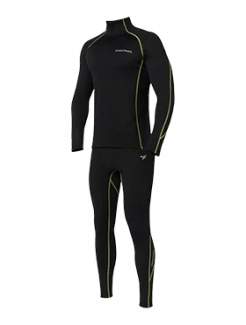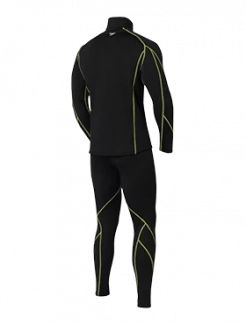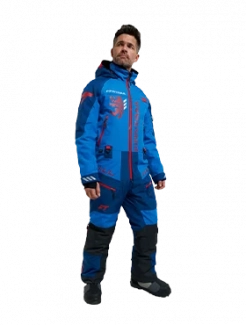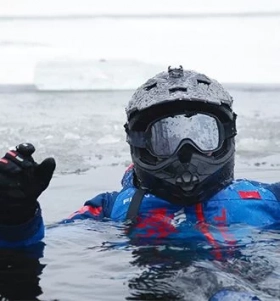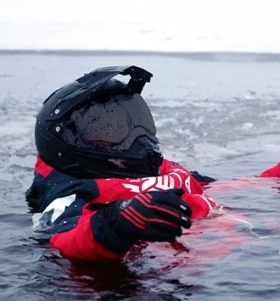Night Ice Fishing Made Simple: Catch More in the Dark
Is ice fishing better at night? The short answer is yes. Night is a mysterious and quieter time when not that many people and vehicles are on the ice, and fish are less scared by human activities. That means that big predatory fish species like walleye or burbot go to the shallow waters, and the chances of catching large fish are much higher at night than during the day. Also, fewer anglers risk going for night ice fishing, so you might be the lucky angler who can land the big night catch at home.
If you are prepared for freezing nights, they might be your greatest adventure. The rewards you may receive are bigger fish and a new experience of fishing in full darkness. If you enjoy time in nature and you need it to recharge your battery, then night time ice fishing might be a life-changing experience. The cold sharpens the senses, the silence deepens and fills the moment, and the night adventure is becoming something authentic and giving.
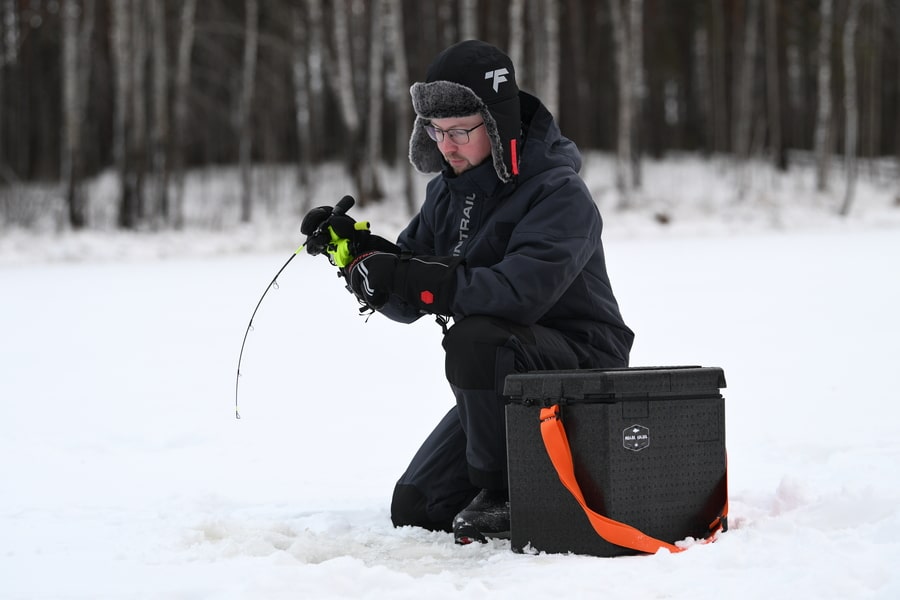
Can you ice fish at night?
If the water entity is the zone prohibited for fishing at daytime, then fishing at night is not allowed as well. There are night patrol rangers who can give fines or penalties for poaching.
However, there are some areas where fishing is only prohibited at night due to spawning season or harsh weather conditions. For that reason, the best decision is to check the local fishing regulations on websites or forums.
In terms of the bite, fishing might be better when you have an ice fishing night. But as the temperature is normally lower at night than during the daytime, fish might be reluctant to bite the bait. Carps and breams, for example, may stay close to the bottom for weeks when the water temperature is low without any reaction to the lures, jigs, or baits you use to catch them. But burbot can be more active in colder water, and they also spawn when the water temperature is around 0–1°C.
The complete silence during nighttime, with no augers roaring and no sleds buzzing, lets fish relax and feed more naturally. Most of the experienced anglers say that this is a different kind of fishing, one that rewards patience and quiet observation.
Ice fishing at night tips
1. Preparing while you still have light
Preparation is half the battle. The first thing you need to learn is that once the sun is gone, everything becomes harder, namely, tying knots, switching lures, and even finding where you left your bait box. For that reason, complete all the necessary preparations and arrive at the location while it is still daylight.
Drilling holes should also be done during the day before it is getting too dark. You have to come earlier to choose the best location and drill a dozen holes for the night ice fishing even if you do not need that many, it will increase the chances to catch fish. There is nothing more frustrating than trying to hold a flashlight in one hand and drilling a hole with an ice auger, especially with a manual one. Also, using an auger at night might scare the fish, and you will not be able to lure them later. Ice fishing for walleye, for example, might be doomed by this simple mistake and the chances to attract this finicky fish are low.
Setting up a shanty or a tent might also be challenging, and doing it in advance can save much time. Preparing the tip-ups, untangling the lines, and having the gear within easy reach are other necessary steps you have to do before it gets too dark.
A short examination of the territory might give you a hint on where to fish. To notice the depth changes, drop-offs, weed beds, and rocky points at night is almost impossible, as you can risk spooking fish with bright lights or just not detect all the details. These features often hold fish at night, just as they do in the day. But during your ice fishing at night, water inhabitants may travel more, so better to plan for mobility, not just one static spot.
2. Light: friend or foe
Light can help you or hinder you at night. Ice fishing crappie at night tips, for example, include using a soft glow under the ice that attracts plankton, which then draws baitfish, and then brings crappies.
Do perch bite at night ice fishing? For cautious perch, sudden bright light can send them scattering. That is why you need to use a headlamp with a red beam, which does not blind you or the fish. So, if you go ice fishing at night for perch, try to keep the lights off unless you absolutely need them for baiting a hook, unhooking a fish, or checking a line.
The perfect plan for nighttime ice fishing is to do it in complete darkness. But if the night is moonless and there is no other source of light on the lake or river, you may need to highlight the tip-ups with small LED sources, or if you have a rod, with special rod tip lights. Make sure the light from your lamp does not shine into the water, as it will scare the fish away.
Additionally, the light from your sonar screen or from your phone may also be an intimidating signal for fish around you. Every flick of the switch changes the environment below you. So, if you are chasing species that spook easily, less is more.
3. Bait and lure choices for the night bite
When the sun is gone, fish rely less on sight and more on vibration, scent, and the faint outlines of shapes against the ice. So, using fluorescent lures might not be a good idea. Those baits are good for fishing in deep waters, but at night, their light is too bright.
Fish may be active, but they are not always in a rush. A lure that hovers and quivers can be more effective than one that darts quickly. And do not underestimate scent, as scented plastics or a smear of bait on a jig can make all the difference in the dark. For burbot, which hunt by smell, fresh cut bait is unbeatable.
Ice fishing walleye at night tips: Try to use glow-in-the-dark jigs with a minnow. A slow jigging motion sends vibrations that they can home in on.
4. Using your ears as well as your eyes
The noises at night are different from the ones that you are used to during the day. And also, when you fish at night, you start to hear things differently. The ice makes its own sounds like groans, cracks, and deep pops that carry across the lake. There are also smaller noises: a light splash from a fish feeding below, or the soft tap of your rod tip when something takes the bait.
Carp, for example, sometimes feed near the surface even in winter. If you stay quiet, you might hear gentle slurps or ripples under the ice. Those sounds can guide you to the right spot without ever seeing the fish.
Crappies fishing at night might also be more efficient. They feed more actively in the dark because they feel safer from predators, so you will often find them moving into shallower areas or suspending mid-water to hunt. The best way to catch them is to first locate their depth using a flasher or sonar, once you hear slurps in the holes.
Staying safe in the dark
-
Check the ice thickness. If falling under the ice during the daytime is dangerous, at night it might kill you. Thus, prior to ice fishing at night, checking the ice thickness is essential. It should be at least 10 cm for walking and 14 cm or more for a snowmobile. No fish is worth falling through, so do not risk stepping on thin ice.
-
Wear safety gear. A flotation suit can keep you afloat if the ice breaks. Additionally, keep ice picks on a cord around your neck so you can pull yourself out if needed. If you go with a shanty, you may consider adding reflective tape on it, so other vehicles can spot your location.
-
Bring reliable light. A good LED headlamp keeps your hands free. Carry a backup flashlight in your pocket in case batteries die.
-
Tell someone your plan and share the location with someone. This way, help can find you if something goes wrong.
-
Watch for warning signs. Avoid dark spots on the ice, pressure ridges, or holes left by other anglers. If the ice sounds hollow or the water level under it seems high, move to a safer area.
Final Words
If you have never tried night ice fishing, it is better to start with a lake you know well and that is not that far from home. Prepare the tip-ups or rods, explore the location before the sun goes down, and go to the location and respect both the cold and the ice. Is ice fishing good at night? Yes, and the rewards are not just in the fish you catch, but in the rare, quiet moments that only happen when the rest of the world is asleep.
Night ice fishing is not just another way to fish; it is another way to experience winter itself. And once you feel that first strong pull in the dark, you will be hooked.



